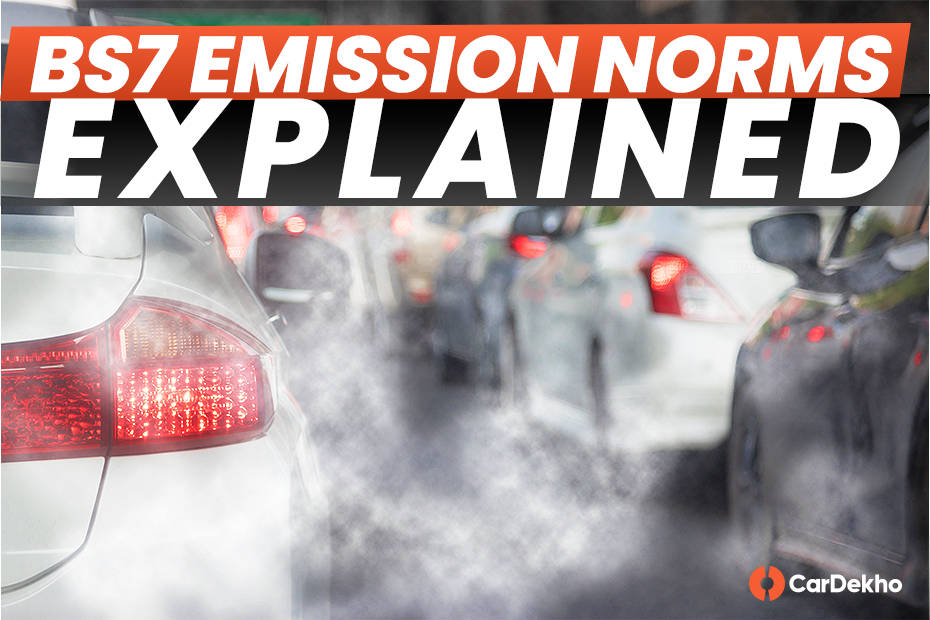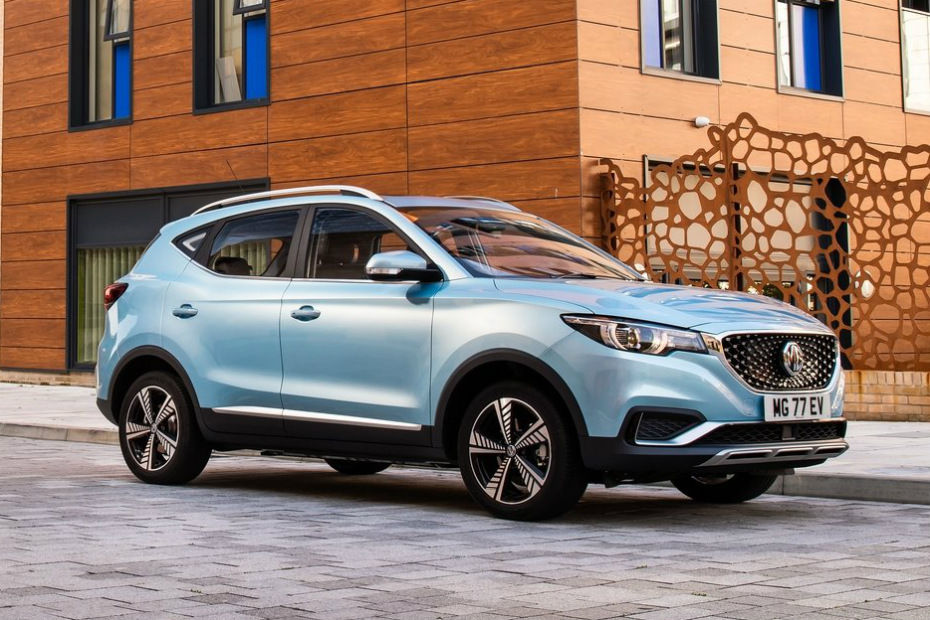Everything You Need To Know About BS7 Norms
Published On Nov 25, 2024 03:02 PM By Yashika
- Write a comment
Bharat Stage 7 norms will also be based on Euro 7 emission norms

In 2023, India’s Transport Minister, Nitin Gadkari, made a strong call to carmakers, asking them to start preparing for the adoption of BS7 (Bharat Stage) norms. His directive was clear: India must keep pace with the rapidly changing landscape of international emission standards, such as the Euro standards, following the European Commission’s announcement of its plan to roll out EU7. Euro Seven norms are expected to be rolled out from 1st July 2025. However, this has not been officially confirmed.
The Transport Ministry’s vision was not just about compliance; it was a strategic push towards innovation and pushing environment-friendly practices within the automotive sector.
Did you know?
BS6 was based on the Euro Six emission norms.
What are BS7 norms?
BS7 norms, to be officially introduced in the next few years, will be built upon the Euro Seven standards. This means we can expect stricter controls over the emissions from both petrol and diesel vehicles. One of the standout features of this new norm will be the ‘On Board Monitoring’ (OBM), to monitor the tailpipe emissions in real-time.
Did you know?
OBM will monitor the emissions of Nitrogen oxides, Ammonia, Particulate matter, Tailpipe emissions, and Engine and exhaust gas.
Emission Norms History in India

Vehicles are a significant contributor to air pollution, necessitating continuous efforts to reduce vehicular emissions. A study conducted by a Delhi-based organization on CO2 emission has depicted that the emission of CO2 on Indian roads is expected to reach 1212 million tonnes during 2035 from a value of 208 million tonnes in 2005.
Indian Automotive Industry recognises this truth and is constantly working towards controlling emissions as per the roadmap suggested by the Auto Fuel Policy and proactively growing environment-pleasant technologies. And now, India is one of the countries manufacturing the most fuel-efficient vehicles in the world. Now let’s have a look at its history:
| Year/Period |
Key Developments in Emission Norms and Fuel Policy |
| 1991 |
Mass emission norms introduced for petrol vehicles. |
| 1992 |
Mass emission norms introduced for diesel vehicles. |
| April 1995 |
Mandatory installation of catalytic converters in new petrol cars in Delhi, Calcutta, Mumbai, and Chennai; unleaded petrol (ULP) introduced. |
| 2000 |
Introduction of Euro I equivalent "India 2000" norms for passenger and commercial vehicles; tight emissions norms for two-wheelers. |
| 2001 |
Euro II equivalent Bharat Stage II norms implemented in Delhi, Mumbai, Chennai, and Kolkata. |
| August 2002 |
First Auto Fuel Policy announced, outlining the Emission and Fuel Roadmap up to 2010. |
| April 2005 |
Bharat Stage III norms implemented in 13 metro cities; the rest of the country continued with Bharat Stage II norms. |
| April 2010 |
Implementation of Bharat Stage IV norms in 13 metro cities; Bharat Stage III norms adopted in the rest of the country. |
| October 2014 |
Extension of Bharat Stage IV norms to an additional 20 cities. |
| 2013 (Document Date) |
Auto Fuel Policy 2025 submitted to the Ministry of Petroleum & Natural Gas (MoP&NG), outlining a roadmap up to 2025. |
| Proposed 2017 |
Planned national implementation of BS IV norms. |
| Proposed 2020/2021 |
Planned implementation of BS V emission norms. |
| Planned 2024 (Revision to 2020) |
Introduction of BS VI norms advanced from 2024 to 2020 due to rising pollution levels in Delhi NCR, leapfrogging BS V. |
Additional standards to be introduced with BS7
The Euro 7 (or BS7) standards rules give emission standards for all motor vehicles including cars, vans, buses, and lorries with one set of rules. These new rules are independent of fuel type and technology, with the same restrictions being applied to petrol cars, diesel cars, electric drive trains, and all other types of cars. They will help to:
-
Better control emissions of air pollutants from all new vehicles: by extending the scope of the on-road emissions test to embrace more driving conditions.
-
Update and tighten the limits for pollutant emissions: restrictions will be increased for all passenger cars and utility vehicles and tightened for lorries and buses while the lowest existing limits for cars and vans will now apply regardless of the fuel used by the vehicle.
-
Regulate emissions from brakes and tyres: the Euro 7 standards rules will be the first worldwide emission standards to include more than exhaust pipe emission restrictions; additional rules limiting particulate emission from brakes and microplastic emission from tyres. It should be noted that all these rules will be applicable to electric cars as well.
-
Support the deployment of electric vehicles: the rules will extend the battery longevity index of cars and Vans to enhance closer looks at the safety of electric cars. This will also trim down the frequency for replacement of batteries in a car’s early years thus cutting down on new critical raw materials used in making batteries.
-
Make full use of digital possibilities: Euro 7 rules will ensure that vehicles are not tempered with and emissions can be controlled.
With a nod to the future, BS7 will also focus on electric vehicles (EVs) and plug-in hybrids. Not only will emissions throughout a vehicle’s lifetime be monitored, but the durability of batteries will be a focal point, fostering consumer confidence and reducing dependency on raw materials.
How is the BS7 norm different from BS6?

Like in all the previous norms, BS7 India will be an improved version of Euro 7. The first change or introduction will be OBM, or On-Board Monitoring, which will connect with the OBD systems, or On Board Diagnostics, that are already installed in a car to monitor tailpipe emissions in real-time. Apart from that, the new Bharat Standard 7 (BS7) will introduce tougher standards of emission control of severe pollutants such as carbon dioxide, carbon monoxide, and nitrogen oxide. For instance, Euro 6 has limits on nitrogen oxides for petrol cars; set at 60mg/kg and 80mg/kg for diesel cars. Now this is equal to Euro 7 whether the car is diesel or petrol, It will be confined to 60 mg/kg. And starting from BS7, there will be more and more turbo-charged and direct-injection vehicles.
Challenges with BS7
Upgrading any vehicle to the new mission norm will require a lot of time and capital. To comply with the measure of BS7, automakers will have to make extra investments. They will simply have to install an Advanced Emission Control System, meaning the buyers will have to pay more to get their vehicles. For instance, last year when the new emission norms, BS6 Phase 2 was being implemented, vehicle producers also increased their prices. Additionally, a lot of cars would face the risk of discontinuation if they are not BS7 engine equipped.
FAQs
What changes will the BS7 norms bring?
In comparison to BS-6 Phase-2 regulations, BS7 standards will be more rigid and impose several restrictions on cars, particularly those equipped with diesel engines.
What emission standard is in use right now in India?
As of right now, all the new vehicles in India have to meet the emission criteria of the BS-VI version. Bharat Stage (BS) emission regulations are mandatory for all motor vehicles in order to be sold and operated in India.
7 out of 9 found this helpful












